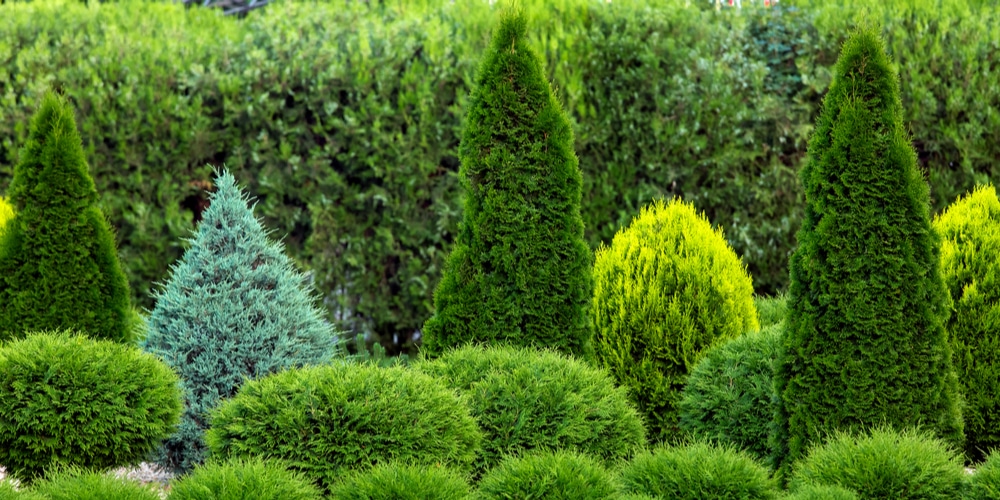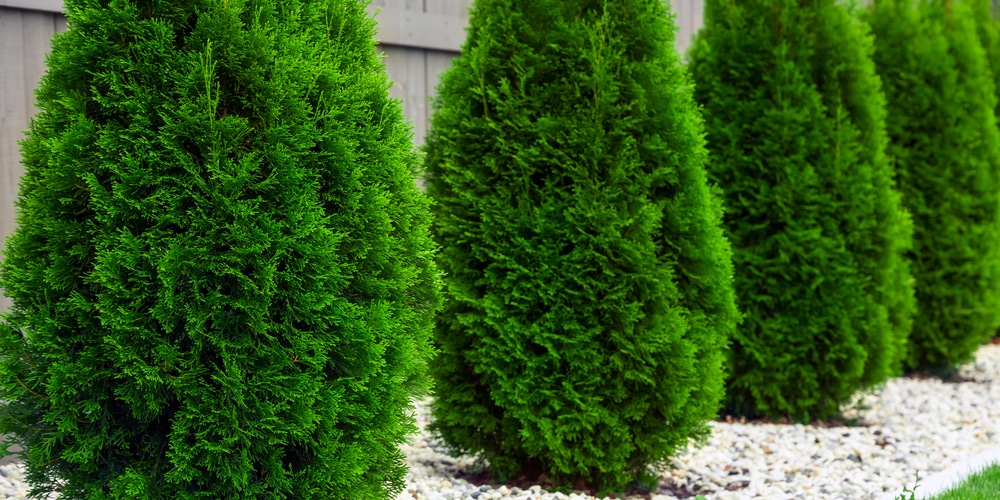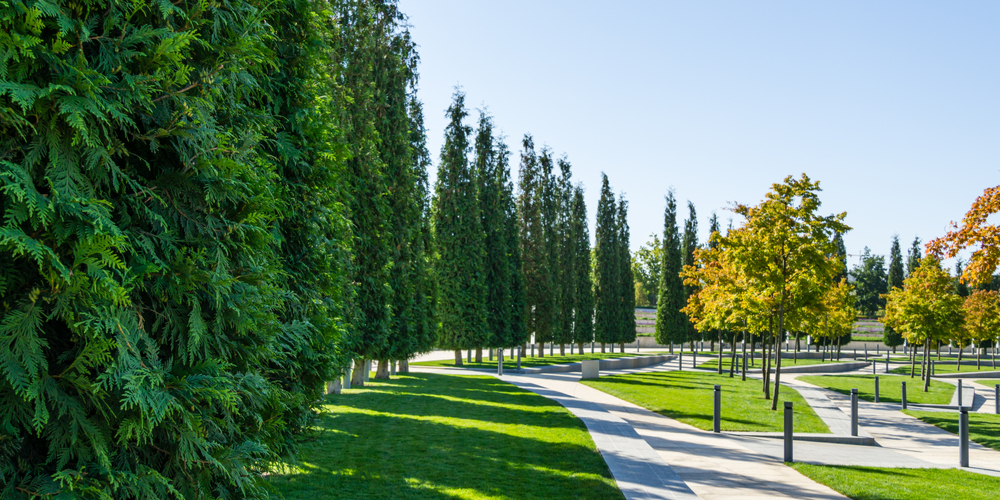Adding the arborvitae plant to your landscape shouldn’t pose any problems as long as you know its requirements. You should, however, leave enough space so that each tree will grow to its intended full width and height.
How far apart should you plant arborvitae? Here’s a short guide for you to follow.
How Far Apart to Plant Arborvitae?
Most gardeners and homeowners turn to arborvitae as an effective hedge or privacy screen to keep out the nosy neighbors. To create a hedge, the arborvitae must have a tight fit in that there’s no noticeable space between them, but not too close that they don’t grow to their full potential.
Most beginners make the mistake of improper spacing in planting Arborvitae. They’d want to pack them in to create a fence, but then would realize that they’re too close together as the saplings grow. On the other hand, too generous a space leads to them not creating the effect you want.
Typically speaking, there are several varieties of arborvitae, with each one having a recommended distance between each other. Eastern species require plants to be spaced two to four feet apart, while the Giant and Japanese should observe a 5-ft distance. The Korean and Sichuan are the biggest species and will need a spacing of somewhere between 8 to 10 feet from each other.
For a solid fence it’s recommended that you put a space of somewhere between 2 to 5 feet so they will stand side by side and won’t touch or overstep their respective boundaries. If you’re having trouble, just imagine how big the arborvitae plant you bought will grow and mature, and that should give you an idea of how far apart they should be.
Other factors you need to consider when planting Arborvitae is how tall or short they can get, if they assume a pyramid or rounded shape and the width when the trees reach maturity.
How Deep Should I Plant Arborvitae?
Arborvitae are best planted come springtime and when all dangers of frost have passed. This gives the plant a head start to growing strong roots before the next winter arrives.
The plants you get are usually packed in burlap sacks or plastic pots. To plant your arborvitae, you will need to choose the right location, which is usually an area that gets full access to the sun. The soil should be workable and well-draining so your arborvitae will thrive.
The next question is, how deep should you plant the arborvitae? As a rule of thumb, the hole you dig should have a depth that’s the same as the tree’s height. The container it came with should serve as a rough guide. The bottom should also be made flat and smooth to eliminate the chances of air pockets. If you can’t, dig two more inches and add finely ground soil to solve the problem.
As for width, you should aim for double that of the arborvitae’s container. Then, turn your attention to the arborvitae and remove the burlap and material by putting the plant on one side and pulling the sack off. Slowly and carefully settle the plant in the hole, then backfill with soil at the 50 percent mark. Provide a generous amount of water, and fill in the rest of the blank space. Water again until the soil and roots have mostly settled.
A newly-planted arborvitae will require constant watering until it becomes well-established. To reduce transplant shock it’s recommended that you do your planting in the evening or where there are overcast skies. On hotter days, make sure to provide plenty of water daily.
Arborvitae Use and Function
Arborvitaes are commonly used as living fences for privacy, as the thick hedge is perfect for those who want something green and beautiful instead of the neighbors’ house and road.
These bushy plants make for a good landscape lining paths and driveways. Arborvitae require very little maintenance and grow quickly, and they can grow just about anywhere as long as there’s bright sun and rich soil.
How Far Apart To Plant Arborvitae: Final thoughts
Arborvitae can be shaped depending on what you like and make for interesting subjects in the yard or garden. Pruning and trimming does require a bit of forethought, but they tend to respond well to small snips here and there.


